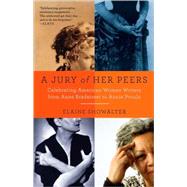
Note: Supplemental materials are not guaranteed with Rental or Used book purchases.
Purchase Benefits
What is included with this book?
| Introduction | p. ix |
| A New Literature Springs Up in the New World | |
| American literature begins | p. 3 |
| Revolution: Women's Rights and Women's Writing | |
| Revolutionary mothers of American literature | p. 15 |
| Their Native Land | |
| National glories | p. 32 |
| Finding a Form | |
| Poetry, prose, and plays | p. 53 |
| Masterpieces and Mass Markets | |
| Great bards and best-sellers | p. 70 |
| Slavery, Race, and Women's Writing | |
| Harriet Beecher Stowe and the first African-American Women Writers | p. 107 |
| The Civil War | |
| Women and the war | p. 129 |
| The Coming Woman | |
| Heralds of emancipated women | p. 164 |
| American Sibyls | |
| Regionalists and visionaries | p. 182 |
| New Women | |
| Feminist Utopias and nightmares | p. 210 |
| The Golden Morrow | |
| Modernism and feminism | p. 241 |
| Against Women's Writing: Wharton and Cather | |
| Seeking art beyond gender | p. 270 |
| You Might as Well Live | |
| Breaking new ground in the 1920s | p. 296 |
| The Great Depression | |
| Women writers in a dark decade | p. 331 |
| The 1940s: World War II and After | |
| Women's stories | p. 362 |
| The 1950s: Three Faces of Eve | |
| Trapped housewives, intellectuals, rebels | p. 390 |
| The 1960s: Live or Die | |
| Breaking away | p. 422 |
| The 1970s: The Will to Change | |
| A decade of awakening | p. 441 |
| The 1980s: On the Jury | |
| Claiming the tradition and changing the laws | p. 467 |
| The 1990s: Anything She Wants | |
| Women writers free | p. 494 |
| Acknowledgments | p. 513 |
| Notes | p. 515 |
| Index | p. 563 |
| Table of Contents provided by Ingram. All Rights Reserved. |
The New copy of this book will include any supplemental materials advertised. Please check the title of the book to determine if it should include any access cards, study guides, lab manuals, CDs, etc.
The Used, Rental and eBook copies of this book are not guaranteed to include any supplemental materials. Typically, only the book itself is included. This is true even if the title states it includes any access cards, study guides, lab manuals, CDs, etc.
Excerpted from A Jury of Her Peers: Celebrating American Women Writers from Anne Bradstreet to Annie Proulx by Elaine Showalter
All rights reserved by the original copyright owners. Excerpts are provided for display purposes only and may not be reproduced, reprinted or distributed without the written permission of the publisher.